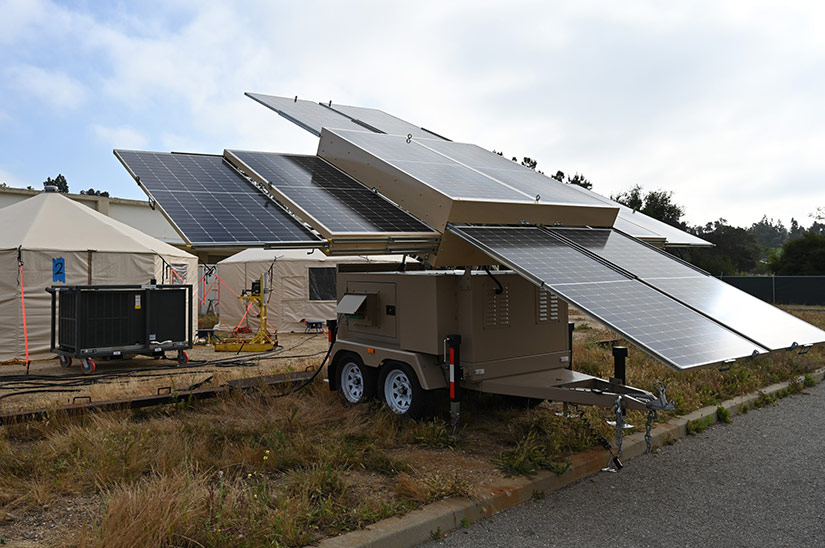NREL Helps US Forest Service Go Green After 2024 Lake Fire
NREL Helps US Forest Service Go Green After 2024 Lake Fire
Oct. 22, 2024 | By Anton Molodetskiy | Contact media relations
…

Office trailers at the Diamond Complex Fire camp use rooftop solar panels to generate electricity for its operations in September 2024.
Photo from Samuel Wu, USFS
One of the biggest challenges of supplying isolated wildland firefighter camps has always centered around fuel. Until recently, gasoline- and diesel-powered generators have been the go-to solution for providing electricity to much-needed catering, showering, handwashing, and coordination facilities. In addition, logistics staff planning firefighting efforts operate out of trailers or yurts that must have power for laptops, monitors, printers, HVAC systems, lights, and more.
Generators have been an effective way to ensure availability of power but are noisy, require regular refueling, and produce high levels of toxic emissions over time. The costs can add up as well, and it is estimated that in one year, U.S. Forest Service firefighting efforts use approximately $8 million or 2,000,000 gallons of diesel fuel—just to run generators in fire camps—enough to power more than 4,000 passenger cars for a year. Additionally, as digital technology becomes essential to improving the effectiveness of wildland firefighting, electricity demands continue to grow, and new solutions are needed to ensure uninterrupted energy generation in remote areas.
…
Expertise from NREL helped make the adoption of renewable energy infrastructure within fire camps a systematic process, with more effective guidance and management systems becoming available to administrators and fireteam leaders. One of the most recent examples is the adoption and installation of solar light towers and high-efficiency lighting to replace traditional diesel-powered lights. When practical, wildfire camp managers can request solar light towers, or hybrid towers with back-up diesel generators, to provide area lighting that reduces fuel usage for these assets by up to 100%, reducing the overall running costs by
as much as 30%. (PDF)
During the recent Lake Fire, NREL and the GFT successfully piloted several renewable energy solutions that put their ideas into practice. By integrating solar power and battery energy storage systems into fire camp operations, camp leaders were able to more efficiently power office trailers, light towers, and toilets and bring critical command and control systems online quickly. New types of solar panels allowed the Lake Fire basecamp to be more energy independent, with solar cells performing well even in smoky conditions. Additional access to batteries also ensured long runtimes, to supplement any drops in supply.

A solar trailer was tested by the USFS National Technology and Development Program during its 2024 Industry Week in San Dimas, California.
Photo from Elmer Balceta, USFS
…

